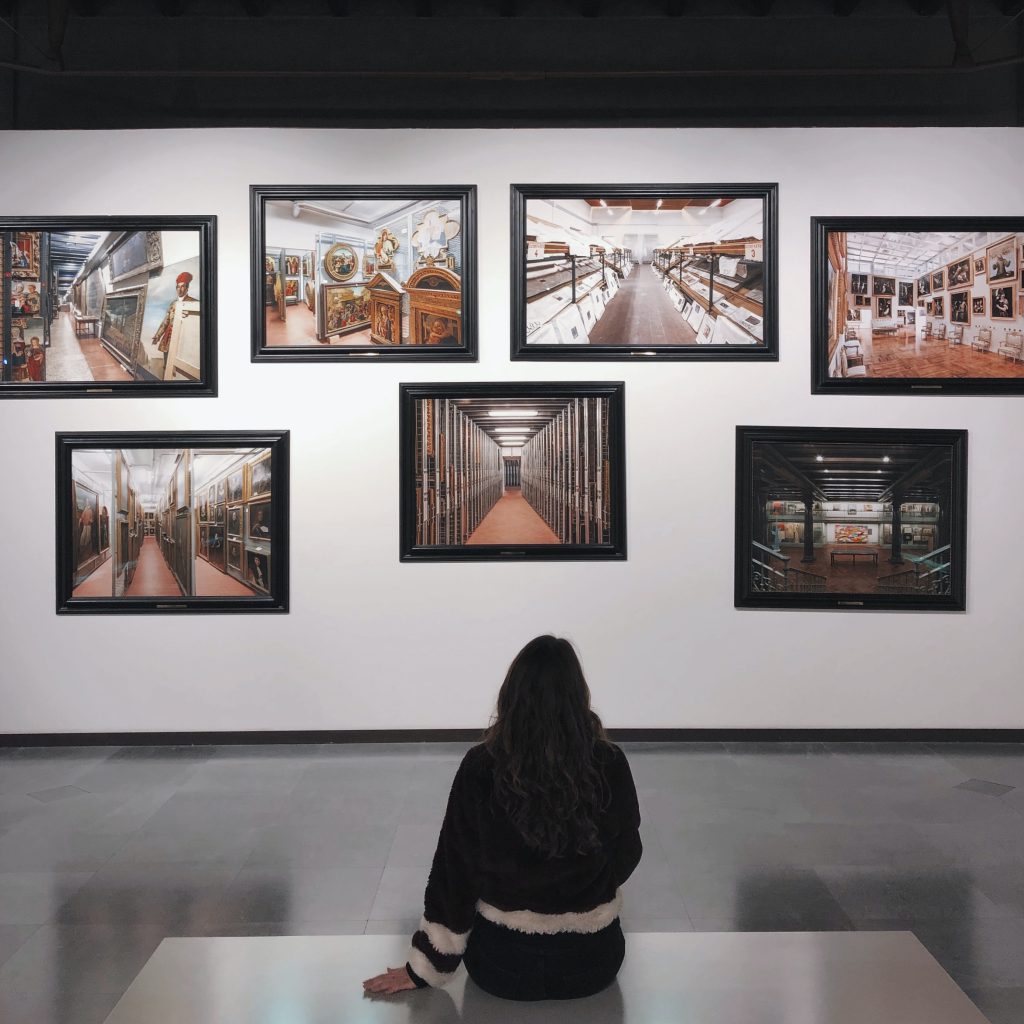Call in the Creatives! Reasons the Next Digital Learner Leader You Hire Should Come from The Arts
Published by: WCET | 1/24/2023
Published by: WCET | 1/24/2023
Today’s post, from three inspirational leaders in the digital and eLearning fields, considers the strengths brought from those who have a background in The Arts. As a musician, theater nerd, and amateur embroiderer, I absolutely enjoyed their discussion and wholeheartedly endorse their advice!
Thank you to Sasha, Jessica, and Jamie for today’s article!.
Enjoy the read,
Lindsey Downs, WCET

Chances are if you’ve worked in the field of eLearning for any length of time, you’ve had a leader with a hidden background in the arts. These individuals have developed unique and transferable skill sets that are increasingly valued in the workplace. You may recognize them as creative individuals with problem-solving skills who aren’t afraid of hard work. They ask for and provide feedback, and critiques they receive are seen as healthy and necessary parts of the team dynamic. They set a clear vision and systematically focus on delivering it. Most importantly, they get things done. A lot of things.
Many of these leaders had to hide or recast their arts backgrounds when transitioning into the digital learning field.
Before you pass up that resume filled with arts experience and expertise, know that leadership is less about specific technical or subject-matter skills, and far more about creating and communicating a clear vision, orchestrating a productive and engaged team dynamic, inspiring a team to work hard with habits that develop excellence, and managing to that “hard deadline.” If you understand these characteristics, those resumes represent the candidates that are the most qualified, because they’ve been developing these skills for a lifetime.
What is the vision? People who have spent years in the arts understand that the vision comes first. The concept of the end state of artwork – whether it be the performance, the show in the gallery – that state is the goal, first and foremost, always. This vision is more than motivating, it is animating. It is the reason for it all.
Leaders who have “grown up” in the arts bring that vision fever to their work. The reason needs to sit at the core of the everyday. It is bigger than ourselves, but it is also more specific than “student success” or “enrollment growth.” It is a shared vision of the future creation that everyone contributes to.

This vision is so important that there is no room for fear or risk aversion. Built into the artistic process is the potential for failure – sometimes a large potential for failure – and that, too, is animating. It propels constant forward progress. Jeanette Winterson, a writer of extraordinary talent, put it simply when she stated that “From our fear comes our safety.”
But the “how” is the hard part. Artists, and performing artists specifically, have an ability to declutter, to get rid of the unnecessary to focus on the most important pieces of executing that vision. Ruthless prioritization is not optional. There is a date that cannot be pushed back because tickets have already been sold, the gallery has already been booked, the lighting crew is only available for that timeframe. So leaders in the arts have to make hard decisions around what gets time and effort and when.
This relentless focus on “what really matters” enables leaders who come from the arts to bring continual focus and prioritization towards the end goal into the everyday. That synthesis of vision and ruthless prioritization is what ensures that, when the curtains part on the opening night, the performers are ready to go.
It also means letting go of ancillary needs, pivoting when the inevitable constraints come up, and continually adjusting to deliver on that vision. In the words of Tyler Durden, it is “the ability to let that which does not matter, truly slide.”
Putting vision into action can be daunting for many. Who hasn’t felt paralyzed by the mountain of work required to accomplish a goal, the fear of imperfections, or the haunting voice that tells all of us I am just not good enough? The artist is equipped to get to work despite these fears because of the very nature of art making. Through relentless practice, day after day, where ideas are tried and sometimes fail, the artist has built a reservoir of confidence, knowing that practice makes perfect, mistakes can be embraced, and evaluation is a part of the process.
An artist can get to work immediately because they know that their very first try is not precious. It is just the very first act on the journey to the final performance. There is no risk in diving in when you know whatever you accomplish today isn’t the finale. And that confidence is more fueled by the notion that one piece of the puzzle doesn’t equal the whole. A less-than-stellar start will not determine the outcome, only not starting will.

For someone who has spent a lifetime practicing an artistic craft, they believe even a terrible start is a good start because they know that mistakes are gold. The realization that something doesn’t work is just as informative as when something does work. An A-HA! moment is not always when it was done right. In fact, we are most apt to learn and grow when we are in the process of doing something new and foreign and we fail miserably at it. For the painter, the very act of creating a finished painting is the application of paint and the removal of it – building something up and taking the mistakes away.
The internal critique is a constant part of the process as the artist looks for that gold in the wash pan. And the artist knows where to find the mistakes by asking others. A person who has spent time developing an artistic craft is comfortable in the space of open, honest, and oftentimes brutal dialogue around their work. They have learned that great wisdom can come from the unique perspectives of others. They alone do not hold all the answers, and the artist has developed a great desire to hear everyone else’s opinion, and seek out the most transformative ideas that others present to them. As the famous writer of Fight Club Chuck Palahniuk declared after being complimented on his work, “I am merely the sum of everyone who has taught me anything at all.”
“[A conductor’s] happiness does not come from only his own story and his joy of the music. The joy is about enabling other people’s stories to be heard at the same time.” – Itay Talgam
Great performances look easy, are seemingly effortless, and are a joy to experience from start to finish. Everyone touching the performance in some way is happy and having fun. You know you’ve experienced something special when this is the case. That said, it is no accident nor coincidence that these outcomes were observed, and success achieved. Leadership in the arts relies on a unique and complex understanding of team dynamics and culture development that values each and every member of the team for what they uniquely contribute both individually and to the ensemble as a whole.

For the conductor (leader), one must consider balance, blend, intonation, dynamic contrast, harmony, melody, and the story to be told through the music for the listener (goal). As leadership expert Simon Sinek has emphasized, success starts with “why.” Building team dynamics begins with clearly defining the ensemble’s goal (telling the story of the music) and a purpose greater than oneself – the team’s why. Balance, blend, and intonation are all related to team dynamics. Essentially, leaders are looking to make sure the team has all of the parts necessary to be successful, that they are all heard, and that no one section/voice outweighs the other, which can create challenges.
Leaders in the arts work to meld voices together so that they are seamless to the audience. To achieve this, a leader develops listening skills and flexibility so that performers are constantly listening to one another and adjusting appropriately in the moment to support the larger goal. For a leader in the arts, the supporting lines are just as important as melody, and each performer is trained to lead and support interchangeably so that there are leaders in every seat. With an ensemble where everyone is both a leader and a supporter, performance outcomes are enhanced because accountability is high (no hiding), but there is also the support necessary to be successful. When everyone contributes, is accountable to the group, is aligned to the mission/goal, and sees the value in all voices/parts, the team takes on an energy of its own that embraces challenges and finds joy in working and performing together.
Time is a finite resource. Using that time effectively is paramount. This is where skills gained through art experiences become great assets for those attempting to meet organizational goals and objectives.
Artists understand that perfection is unattainable. Deadlines are immovable. The doors will always open. The curtain will always go up. The audience will always evaluate your work. Artists are fearless in the face of criticism; critique is the way it is.
Leaders with arts backgrounds have spent lifetimes working efficiently towards deadlines. Project management skills are honed over decades, skillfully choreographing multiple moving pieces into a coherent whole in a tight timeline.

WCET Executive Council, Senior Vice President, Wave at D2L
Director of Student Services , Unitek Learning
Vice President of Academic Strategy and Faculty Success, Unitek Learning